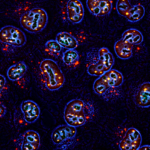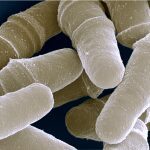Link to Pubmed [PMID] – 17209013
Proc. Natl. Acad. Sci. U.S.A. 2007 Jan;104(3):893-8
The sheltering of chromosome ends from illegitimate DNA repair reactions and telomere length homeostasis are critical for preserving genomic integrity. Growing evidence implicates covalent protein modification by SUMO (small ubiquitin-like modifier) (sumoylation) in the regulation of numerous DNA transactions, including DNA repair and transcription, as well as heterochromatin formation and maintenance. We have recently shown that fission yeast Pli1p is a SUMO E3 ligase and that pli1 mutants, which are impaired for global sumoylation, are viable, but exhibit de-regulated homologous recombination and marked defects in chromosome segregation and centromeric silencing, as well as a consistent increase in telomere length. In this work, we explore the mechanisms underlying sumoylation-dependent telomere maintenance. We show that Pli1p, but not the related Nse2p, is the principal SUMO E3 ligase enzyme involved. Using both a pli1 mutation and a physiological “knockdown” of sumoylation, achieved by inducible expression of a dominant negative form of the conjugating enzyme Ubc9p, we further show that telomere lengthening induced by lack of sumoylation is not due to unscheduled telomere-telomere recombination. Instead, sumoylation increases telomerase activity, therefore suggesting that this modification controls the activity of a positive or negative regulator of telomerase.



